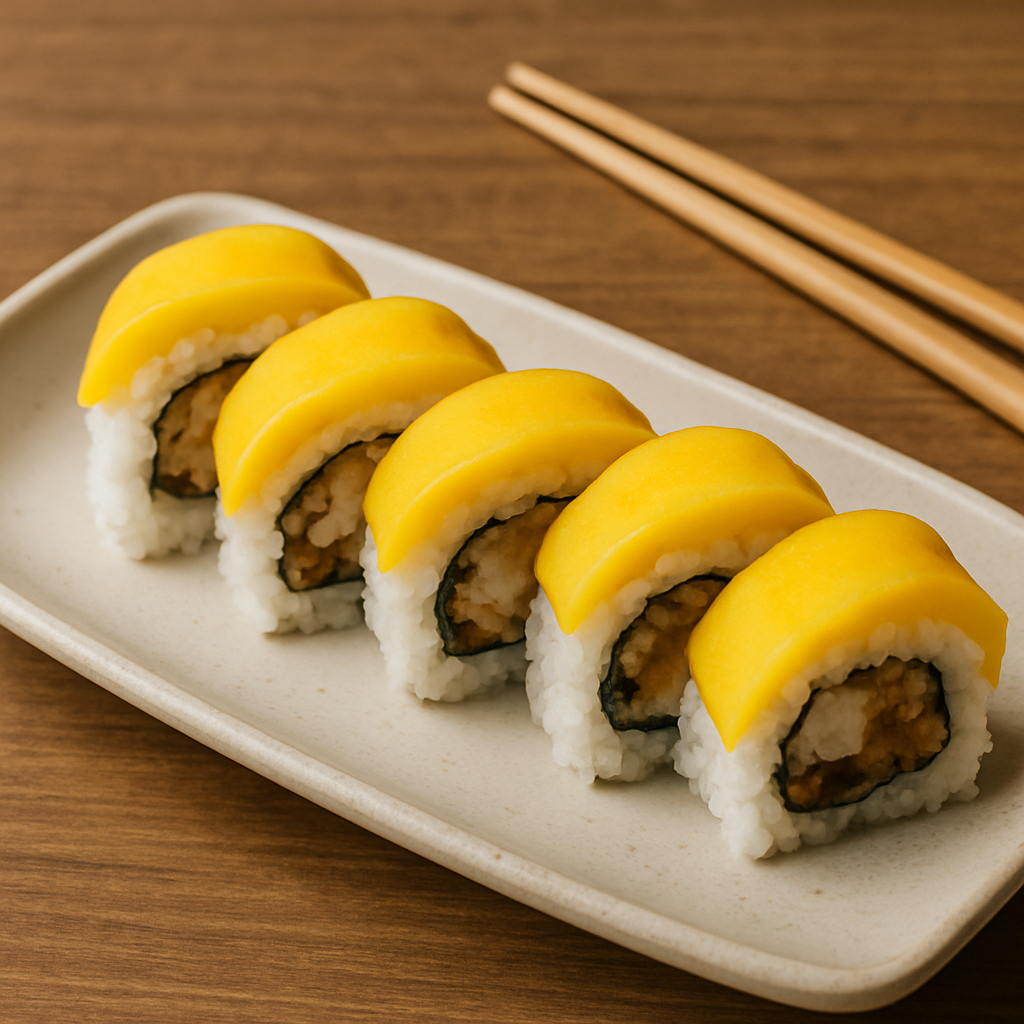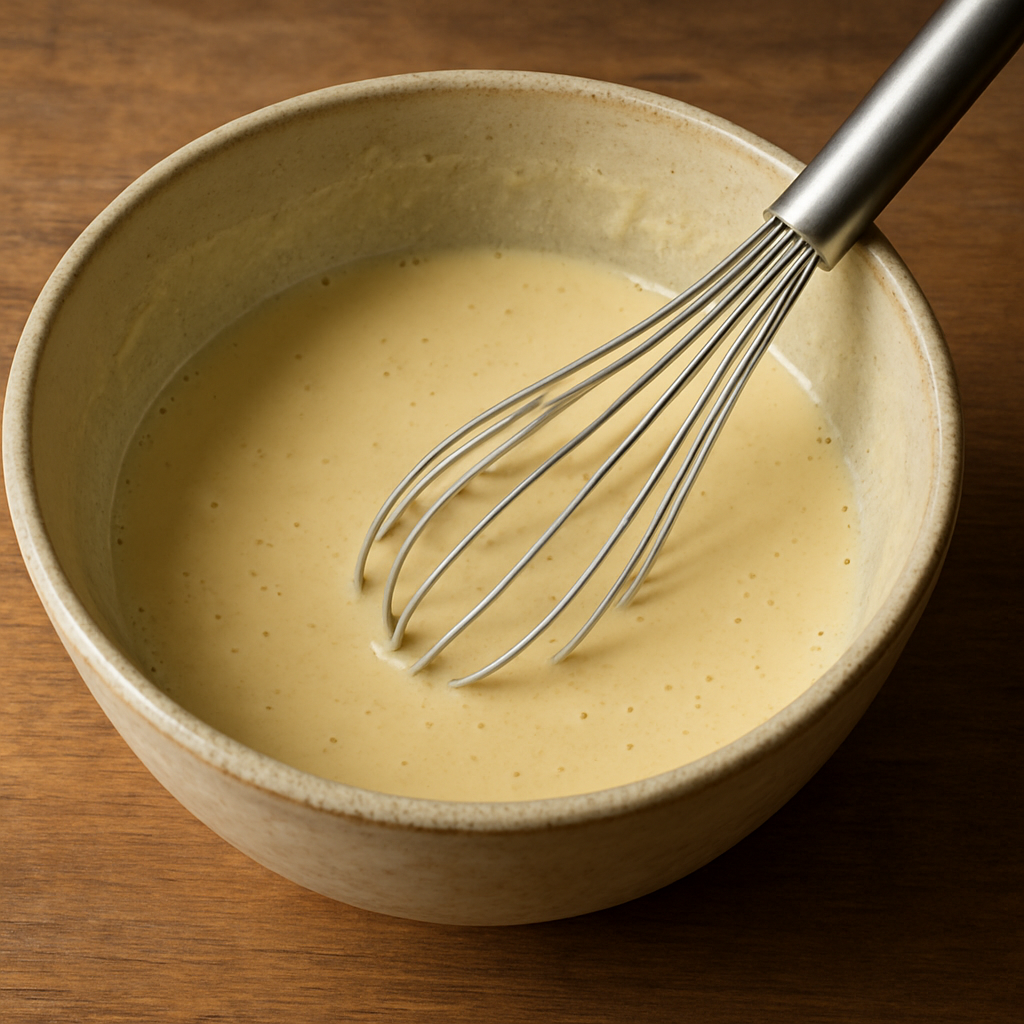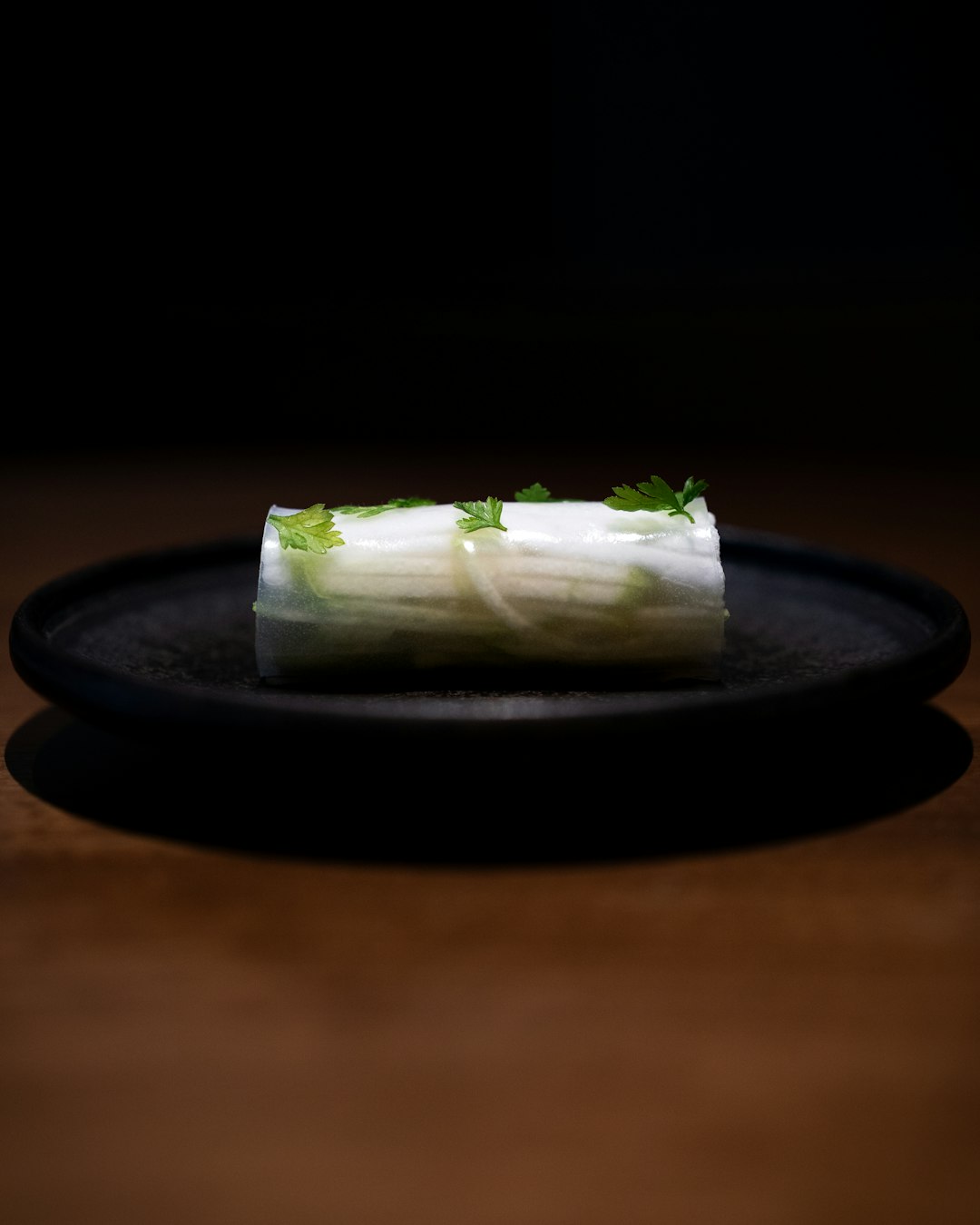If you’ve ever wondered how to make those delectable mango tempura rolls that grace the menus of your favorite sushi spots, you’re in for a treat. These rolls are a delightful fusion of crispy tempura and the juicy sweetness of mango, wrapped up in a neat sushi roll. Whether you’re a seasoned chef or a home cook looking to try something new, this guide will walk you through each step of crafting these easy sushi rolls with mango. From gathering your ingredients to perfecting your rolling technique, you’ll learn everything you need to know to recreate these delicious rolls at home.

Mango tempura rolls are not just another sushi roll; they are a symphony of flavors and textures. The crispiness of the tempura, combined with the soft rice and the refreshing sweetness of mango, offers a unique taste experience. Each bite delivers a satisfying crunch followed by the luscious, tropical flavor of mango, making them an irresistible treat for the palate. Plus, they add a vibrant color to your sushi platter, making them as visually appealing as they are delicious.
A Unique Fusion of Flavors
The combination of tempura and mango provides a delightful contrast between savory and sweet. The crispy tempura offers a satisfying crunch that complements the smooth, juicy texture of the mango. This fusion creates a taste sensation that is both refreshing and indulgent, capturing the essence of both Japanese and tropical cuisines. The layers of flavor make these rolls a standout choice for those looking to explore new culinary horizons.
Visual Appeal on Your Plate
Mango tempura rolls are a feast for the eyes as much as they are for the taste buds. The bright orange hue of the mango slices brings a pop of color to the sushi platter, making it an attractive centerpiece. The contrast between the golden tempura and the vibrant mango creates a visual harmony that enhances the dining experience. Whether you’re serving these rolls at a dinner party or enjoying them solo, they are sure to impress with their stunning presentation.
An Experience of Textures
The interplay of textures in mango tempura rolls is a major part of their allure. The crispy tempura, tender sushi rice, and silky mango slices create a multi-dimensional eating experience. Every bite offers a mix of crunch, softness, and juiciness, keeping the palate engaged and intrigued. This dynamic texture profile is a testament to the thoughtful composition of the rolls, making them a joy to eat.
Ingredients You’ll Need
Before diving into the process, let’s gather all the ingredients you’ll need for these scrumptious rolls. Having everything ready at your fingertips will make the preparation process smoother and more enjoyable. From the sushi rice to the tempura batter, each component plays a critical role in crafting the perfect roll.
- Sushi Rice: 2 cups of cooked and seasoned sushi rice.
- Nori Sheets: 4-5 sheets of roasted seaweed.
- Mango: 1 ripe mango, peeled and thinly sliced.
- Tempura Batter: 1 cup of all-purpose flour, 1 cup of ice-cold water, and 1 egg.
- Vegetable Oil: For frying.
- Shrimp or Vegetables: Optional, for added tempura filling.
- Soy Sauce and Wasabi: For serving.
Selecting Quality Ingredients
The quality of your ingredients can make or break the final dish. Opt for fresh, high-quality sushi rice to ensure it has the right texture and stickiness. When selecting mangoes, look for ones that are ripe but firm, which will slice easily and hold their shape in the roll. Choosing premium nori sheets will enhance the overall flavor and provide the perfect wrap for your sushi rolls. Fresh ingredients are key to achieving the best results.
Preparing the Tempura

Tempura is a key component of this dish, providing that signature crunch. Here’s how to prepare it:
- Mix the Batter: In a bowl, combine the flour, ice-cold water, and egg. Mix gently. The batter should be slightly lumpy to ensure a light, crispy texture. Overmixing can lead to a dense coating, so aim for a balance that captures air pockets.
- Heat the Oil: In a deep pan, heat the vegetable oil over medium-high heat until it reaches 350°F (175°C). Maintaining this temperature is crucial for achieving the ideal crunchiness in your tempura.
- Dip and Fry: Dip your choice of shrimp or vegetables into the batter, ensuring they are well-coated, and carefully place them into the hot oil. Fry until golden brown and crispy. Remove and let drain on paper towels. This step is where the magic happens, as the batter transforms into a golden, crispy delight.
Enhancing the Tempura Experience
While tempura batter is traditionally simple, you can enhance its flavor by adding a pinch of salt or a dash of pepper. This subtle seasoning can elevate the tempura and add another layer of flavor to your rolls. Additionally, experimenting with different vegetables such as sweet potatoes or bell peppers can provide varied textures and tastes, making each roll unique.
Maintaining the Right Oil Temperature
The temperature of the oil is crucial for perfect tempura. Too hot, and the batter will burn before the inside is cooked; too cool, and the tempura will absorb excess oil and become greasy. Use a kitchen thermometer to monitor the oil temperature, and adjust the heat as needed to maintain consistency. Frying in small batches helps keep the oil at the right temperature, ensuring each piece of tempura is light and crisp.
Draining for Crispiness
Properly draining tempura is essential for preserving its crisp texture. After frying, place the tempura on a wire rack or paper towels to remove excess oil. This step not only enhances the texture but also keeps the tempura from becoming soggy. For the best results, serve the tempura as soon as possible after frying to enjoy it at its peak crispness.
Assembling the Mango Tempura Rolls
Now that you have your tempura ready, it’s time to assemble the rolls. This process is where your creativity can shine, as you bring together the elements into a cohesive, delicious sushi roll.
Preparing the Sushi Rice
Sushi rice is the foundation of any sushi roll. Here’s a quick guide to preparing it:
- Rinse the Rice: Rinse 2 cups of sushi rice under cold water until the water runs clear. This removes excess starch, preventing the rice from becoming gummy.
- Cook the Rice: Use a rice cooker or a pot to cook the rice according to package instructions. Once cooked, let it cool slightly. Properly cooked rice should be sticky enough to hold together but not mushy.
- Season the Rice: Mix in a combination of rice vinegar, sugar, and salt to taste. This gives the rice its characteristic flavor, balancing the sweetness and acidity perfectly.
Crafting the Perfect Rice Texture
Achieving the ideal rice texture is a delicate balance. The rice should be sticky enough to hold its shape but not so sticky that it clumps together excessively. Adjust the amount of vinegar, sugar, and salt to suit your taste, and gently fold the seasoning into the rice with a spatula. This technique helps maintain the rice grains’ integrity while infusing them with flavor.
Rolling the Sushi

by Harrison Chang (https://unsplash.com/@harrisonchang)
- Lay the Nori: Place a sheet of nori on a bamboo sushi mat, shiny side down. This orientation helps the roll seal properly.
- Spread the Rice: Wet your hands to prevent sticking, then evenly spread a thin layer of sushi rice over the nori, leaving about an inch at the top edge for sealing. The thin layer ensures a balanced roll that isn’t overwhelmed by rice.
- Add the Filling: Place a line of mango slices and tempura along the center of the rice. You can also add avocado or cucumber for extra flavor and texture. These additional ingredients enhance the roll’s complexity.
- Roll It Up: Using the bamboo mat, roll the sushi tightly, pressing gently to seal the edge of the nori. A firm roll ensures the ingredients hold together when sliced.
- Slice and Serve: Use a sharp knife to cut the roll into bite-sized pieces. Serve with soy sauce, wasabi, and pickled ginger. These accompaniments provide a traditional touch to the sushi experience.
Ensuring a Clean Roll
To achieve a clean, tight roll, apply even pressure as you roll with the bamboo mat. This technique helps compact the ingredients without squeezing them out. Additionally, using a sharp, damp knife to slice the roll prevents tearing and ensures clean cuts, preserving the roll’s aesthetic.
Tips for Perfect Mango Tempura Rolls
Creating the perfect mango tempura roll is an art form. Here are some tips to help you master the process and ensure your sushi rolls come out perfectly every time.
Choosing the Right Mango
The star of this sushi roll is undoubtedly the mango. Choose a ripe mango that is slightly firm to the touch. It should give a little when pressed but not be too soft. This ensures that your mango slices are sweet and juicy, complementing the tempura perfectly. A perfectly ripe mango enhances the overall sweetness and texture of the roll.
Mastering the Tempura Technique
- Keep It Cold: Ensure your batter is ice-cold. This contrast in temperature helps create a light, crispy tempura. The cold batter hitting the hot oil creates steam, which results in a crisp coating.
- Don’t Overmix: A few lumps in the batter are okay. Overmixing can lead to a dense coating. The lumps will expand during frying, contributing to the light texture.
- Fry in Batches: Avoid overcrowding the pan to maintain the oil temperature, ensuring even frying. This step ensures each piece of tempura is cooked to perfection.
Enjoying Your Homemade Sushi
Creating mango tempura rolls at home not only gives you a delicious end result but also a sense of accomplishment. Enjoy these rolls as an appetizer, main course, or as part of a sushi night with friends and family. Pair them with a refreshing drink like green tea or sake for a full Japanese dining experience. The satisfaction of making your own sushi adds to the enjoyment of the meal.
Experiment and Have Fun
Feel free to experiment with different fillings or dipping sauces to make your mango tempura rolls truly your own. Whether it’s adding a spicy mayo drizzle or incorporating different vegetables, the possibilities are endless. Customizing your rolls allows for creativity and personalization, making each sushi-making session unique.
Sharing Your Culinary Creation
Sharing your homemade sushi with friends and family is a rewarding experience. Not only does it showcase your culinary skills, but it also brings people together to enjoy a meal crafted with care. Encourage your guests to try their hand at rolling sushi, making it a fun and interactive dining experience.
In conclusion, making mango tempura rolls at home is a rewarding culinary adventure that brings the flavors of a sushi restaurant right to your kitchen. With this guide, you’re well-equipped to create these easy sushi rolls with mango that are sure to impress. So roll up your sleeves, gather your ingredients, and get rolling! Whether you’re making them for a special occasion or a casual dinner, these rolls are a testament to the art of sushi-making and a delicious way to enjoy the fusion of flavors and textures.








